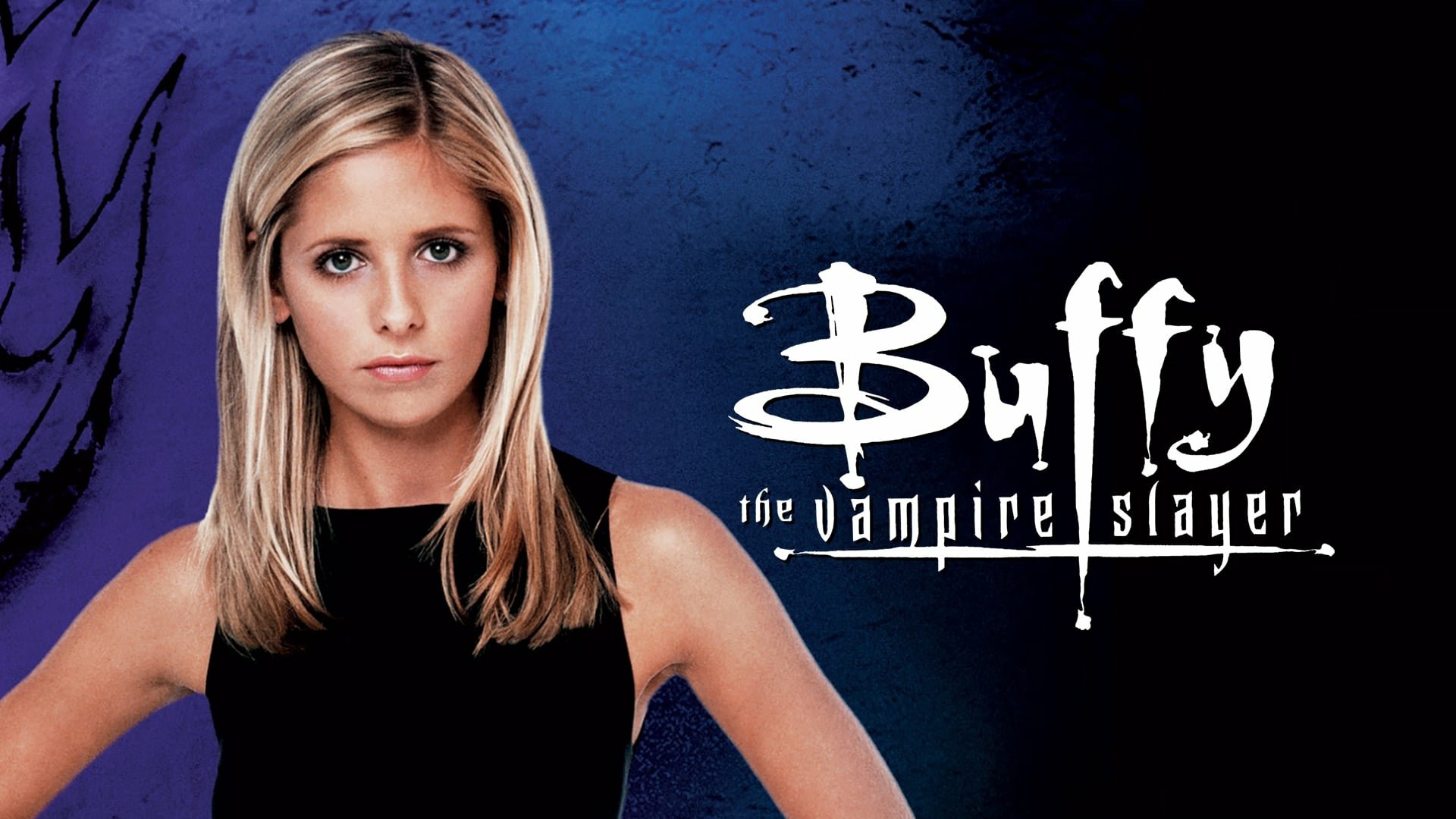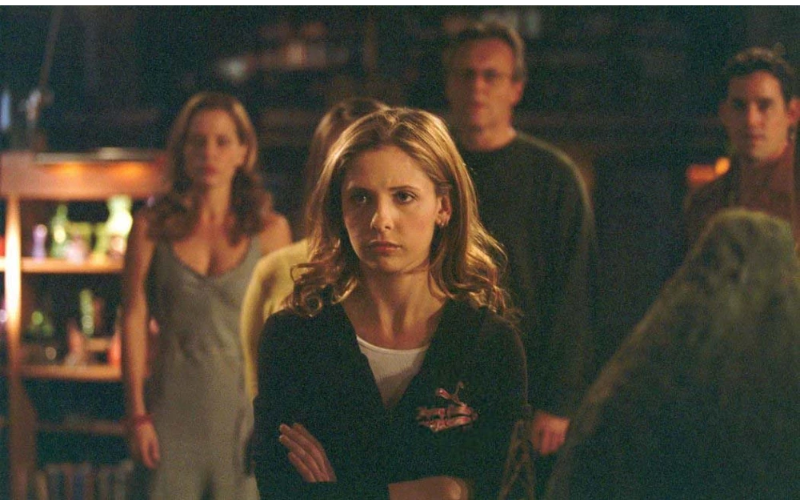
She Is The Slayer: How Buffy Redefined Supernatural TV Shows
“Into every generation, there is a chosen one. One girl in all the world. She alone will wield the strength and skill to stand against the vampires, the demons, and the forces of darkness; to stop the spread of their evil and the swell of their numbers. She is the Slayer.”
– The original prophecy of the Slayer.
When Buffy the Vampire Slayer burst onto our TV screens in 1997, we had no idea that it would go on to redefine the supernatural TV genre. From the visionary mind of Joss Whedon, the show broke ground with its strong, resilient heroine, complicated and relatable characters, and some of the best episodes of any TV show before or since. Nearly thirty years on, Buffy remains a pivotal show in the hearts and minds of fans worldwide, and Buffy Summers herself continues to be one of the most bad-ass heroes the world has ever met.
Buffy Summers (played by Sarah Michelle Gellar) throws every cliché about damsels in distress and men on white horses out the window. After discovering she is the Slayer – the one with the power to fight and defeat vampires and other supernatural creatures and burdened with the responsibility to save the world – Buffy and her mom, Joyce (Christine Sutherland), move to Sunnydale, a quiet little town that just so happens to be situated on a Hellmouth. It’s here that she meets her two closest friends, Xander (Nicholas Brendon) and Willow (Alyson Hannigan), and her Watcher, Rupert Giles (Anthony Stewart Head). As the Slayer, the fate of the world rests in her reluctant hands. Buffy wants to be a normal high schooler but her evenings, nights, and eventually her entire life must be dedicated to fighting the forces of evil that threaten her world and those she loves.

Buffy’s story is one of growth, perseverance, and resilience. With her incredible strength and superior reflexes, she is a physical force to be reckoned with. However, she also has a lot to learn. In the early seasons, she and Giles frequently conflict about her duties as a Slayer and her desire to lead a normal life. Her struggle to accept the huge responsibilities placed on her young shoulders makes her a compelling and relatable character and shape her character growth throughout the series. She is pushed into dangerous situations and difficult decisions that no one, young or old, should have to face. Through all the heartache, loss, and danger, she draws on her resilience, her personal strength, and her sense of duty, even when the weight of the world feels unbearable.

As a supernatural show, Buffy the Vampire Slayer is, of course, highly revered for its villains. Vampires are naturally the principal threats, particularly in the early seasons, but the show also draws on a wider range of supernatural creatures, including witches, warlocks, gods, demons, ghouls, and, most chilling of all, humans. It typically followed the “monster of the week” format, with each season culminating in Buffy’s confrontation with the “big bad” – a term coined by Buffy the Vampire Slayer that has become part of pop culture language. The show features some of the best bad guys in TV history, from Angelus to Spike to the Gentlemen.

One of the things that makes Buffy the Vampire Slayer stand out from other supernatural series is its focus on the intricacies of human emotions and behavior. It paved the way for shows like Supernatural, The Vampire Diaries, and True Blood, where the characters’ journeys are given equal weight with supernatural threats. Joss Whedon excels at creating complex characters. Buffy, Xander, Willow, and Cordelia (the original frenemy, played by Charisma Carpenter) start the series as teenagers. We see all the messy parts of growing up: first love, first heartbreak, first loss, and all the mistakes they make along the way. The show’s writers let their characters make the wrong decision, behave selfishly or foolishly, and let down those they love. But we also see them stand up for each other, support and love each other, be brave and loyal and selfless. It’s the human element of Buffy the Vampire Slayer that has kept the show in so many fans’ hearts in the decades since we said goodbye to it.
Buffy’s two main love interests, Angel (David Boreanaz) and Spike (James Marsters), are likewise complex characters who change and develop over time. Angel, who first appears in season 1, is a brooding vampire with a soul. He is Buffy’s first love and their relationship is powerful and devastating. The effects of this relationship are felt long into the series, reflecting how deeply loving and losing can affect a young heart. Spike, who (literally) crashes into Buffy’s world in season 3, is initially a villain; a soulless vampire with no regard for human life or the interests of others. His character growth and development made him one of the most beloved characters in the series and a worthy partner for Buffy in her own journey.

Across its seven seasons, Buffy the Vampire Slayer broke ground with some of the most innovative and creative episodes in TV history. “Once More, With Feeling”, the musical episode from season 6, remains one of the best Buffy episodes. Season 4’s “Hush”, in which everyone in Sunnydale loses their voice when the town is attacked by the horribly sinister Gentlemen (as mentioned above), received an Emmy nomination for “Outstanding Writing in a Drama Series.” Every fan of the show remembers “The Body” in season 5; an episode so achingly sad it’s hard to even think about it. We’ll avoid spoilers here but the episode deals with sudden death with a rawness that is both harrowing and deeply moving. Suffice to say, it’s an incredible episode and has been hailed as one of the best in the series and a ground-breaking feat in TV shows.

Buffy the Vampire Slayer combines all the best elements of a supernatural drama. Bad guys come in all shapes and sizes and pose credible threats, causing many of the show’s most shocking and heartbreaking events. The plotlines are creative and often unexpected, with episodes that made TV history and pushed boundaries, paving the way for shows to come. The characters are nuanced and human, flawed and brave and selfish and good-hearted. Above all others, Buffy Summers set the standard for female heroes. Her bravery, strength, and resilience are balanced with the very real challenges of being a teenager, a friend, a lover, and a daughter – and, above all else, the Slayer. Thanks to Buffy, many TV series of the last two decades have featured female characters kicking ass and taking names, with or without a romantic love interest holding their hand. From Veronica Mars to Wynonna Earp to The Chilling Adventures of Sabrina, Buffy the Vampire Slayer’s influence is still felt to this day and will continue to define TV shows and female heroes long into the future.
Have you watched Buffy the Vampire Slayer? If so, tell us your opinions and thoughts about Buffy and the show in the comment section below, we’d love to hear from you! And don’t forget to sign up to our email list to get Finds of the Week and our free newsletter, PopPulse Digest, delivered straight to your inbox.
More on Youtube
CHECK OUT THE CAPITAL CITY SELECTIONS DEALS PAGE FOR YOUR TOP FINDS!
This article contains links to external sellers and affiliate marketing. As Amazon associates, we earn from qualifying sales.
More Stories
Daredevil Born Again: A Return to Form on Disney+
Article SummaryDaredevil: Born Again delivers on the original series' gritty tone with strong writing and exciting plot twists.The show introduces...
A Look at What Happened Before Daredevil: Born Again
Article SummaryExplore key character arcs: Review what happened to Matt Murdock, Karen Page, Foggy Nelson, and other main characters before...
Why The Office Deserves Its Place Among TV’s Greatest Sitcoms
Originally making waves as a British series, The Office crossed the Atlantic to inspire a new wave of innovative comedy...
Alien’s Ellen Ripley and the Female Action-Hero Archetype
The 1970s saw the birth of a different kind of action hero than one familiar to movie audiences: women. Before...
From Walter White To Heisenberg: When People Break Bad
Few movies or TV shows capture the essence of morally complex characters quite like Breaking Bad. Over the course of...
Deadpool & Wolverine Review: The Boys Are Back (Spoilers)
Marvel is back.On July 26th, Deadpool & Wolverine exploded onto the big screen with a bang, a whole lot of...


